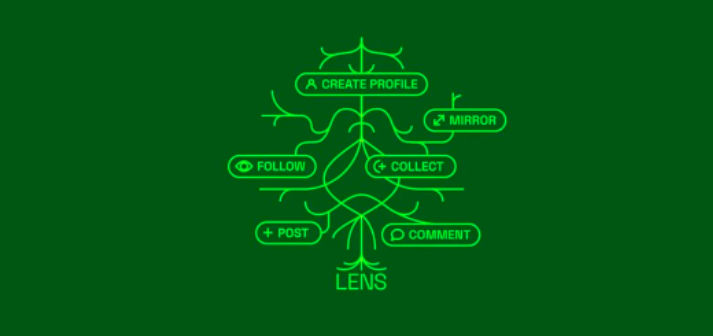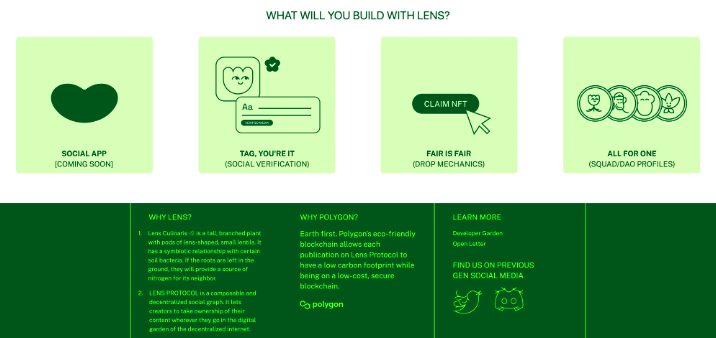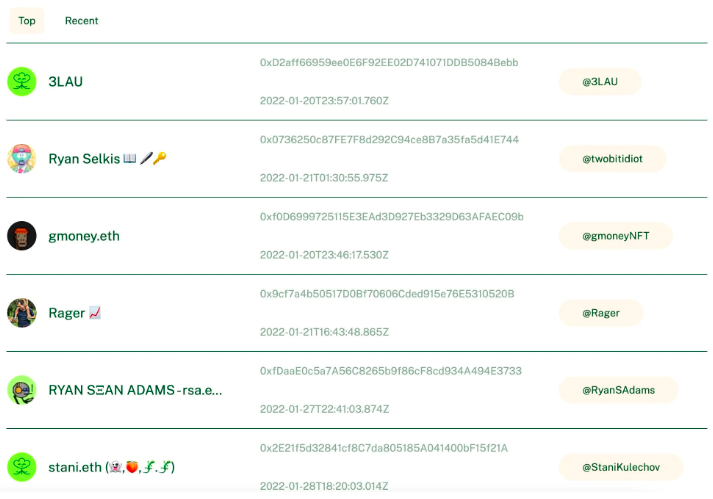An article to understand the Web3 social media protocol Lens Protocol: a powerful tool for building a Web3 platform
Original title: "Lens Protocol"
This article is from The SeeDAO.
This article is from The SeeDAO.
The founder of Lens Protocol, Stani Kulechov, described on Twitter that Lens is "an open, composable Web3 social media protocol that allows anyone to create unmanaged social media profiles and build new social media applications." This protocol is mainly used to help developers build Web3 native social media. Any application built on top of Lens can extend the social graph and benefit all applications in the ecosystem.
01 What problem does Lens Protocol solve?
If Lens Protocol is just trying to build a decentralized social platform, that doesn't make it an exciting project. Lens pointed out: the current social platforms are fighting on their own, the cost of migration between platforms is high and difficult, and the high wall of Web2-like information makes social media a zero-sum game.
If a worker wants to do a good job, he must first sharpen his tools. Lens Protocol is not a platform, but a set of powerful tools for building a platform; developers can freely use this set of tools to build a Web3 social platform that meets their needs. The community has the freedom to develop the functions that users need and the platform interfaces they want to link; each user can get the nourishment of the entire ecology, zero-sum game ❌ cooperate with the game ⭕️.

02 Main functions of Lens Protocol
Lens Protocol defines the concept of several main functions, but Lens allows developers to use modular components to build their own social applications arbitrarily. Developers are encouraged to develop new components that enhance product experience; other external applications can also access Lens and share the ecological advantages of Lens.
NFT of personal homepage — Profile
Personal homepage NFT is a symbol of account ownership. Users are no longer bound by passwords and accounts. As many NFTs as there are accounts, it is also the most important concept of Lens. The home page NFT will record all the history (posts, interactions) of an account.
Publish content—Publication
Content is the soul of social networking, and each post will be directly linked to the homepage NFT (after using Lens, there will be many NFTs in Poly's address). In addition to forwarding and commenting, the posting function also comes with 2 additional functions (collection module: user You can directly mint the original post into NFT; reference mode: decide who can repost and comment).
Comment/Forward — Comment / Mirror
In many cases, comments can be the same as the original post or even more exciting, but due to the limitations of Web2, there is no room for comments to shine. So Lens confirms to achieve this: both users have their own comments.
Lens calls forwarding a mirror, but the forwarding function will be limited by the settings of the original post.
Collection—Collect
The created content can be directly collected and purchased by users. The monetization channels for high-quality content have become more direct and fair, which will greatly encourage the creation to continue to play. By using the Collect module, creators can even set: open sales of NFT during a certain period of time, etc. This is also similar to the traditional pay-to-read experience.
Follow—Follow
Followers are also recorded; this means that early followers of high-quality accounts will become the objects of airdrops or bonuses in the later stages (this is the charm of blockchain culture).
Community management + in-situ DAO? — Built-In Governance
Now that there is a community and an identity certificate, it is on the chain; why can't popular projects build DAO directly on Lens? Yes, Lens also thought of it, so it made a community management function, and users can become the administrator of a community with the specified identity certificate.
Again, these functions are just the most basic gameplay, on which the community and users can develop their own functions and gameplay; after that, each community on Lens will develop functions and rules that perfectly match their needs, which directly revitalizes the entire Web3 social.

03 Lens Protocol & Competitors
At present, whether it is Web2 or Web3, users still mainly focus on centralized Twitter, YouTube, or Discord for socializing. It is not difficult to find that the common problem of many Web3 social platforms is that they copy the platform structure and gameplay of Web2, with not many functions, few users, and inactive communities. Many Web3 creation teams have a small number of people, and new features are not updated in a timely manner. Users feel limited when using it, and naturally they will not stay for a long time.
RSS3
RSS3 Protocol is a platform-free aggregated media; it is completely open source, and everyone can see all the code of the project, modular, and developers are free to develop functions according to their own needs. RSS3 can be compared to an extensible decentralized port, any kind of information can be linked to this port, and then output and displayed efficiently. The RSS3 protocol breaks through four levels of blockchain media: creation, storage, distribution and rendering. RSS3 also appeared earlier than Lens Protocol, and many products have begun to use the RSS3 protocol. RSS3 is also a powerful tool for ecological development.
In fact, Lens Protocol and RSS3 have many similarities; taking a step back, we can understand their differences in this way: RSS3 protocol opens up the connection between non-same sources and different levels of information, and is more suitable for developing product structures than Lens. Lens Protocol can also be used to develop structures, and it also provides tools for managing DAOs. Compared with RSS3, it is more suitable for developing highly interactive products.
04 Community & Community Building
The Lens community is relatively quiet; because the protocol is more aimed at developers, everyone is developing seriously. However, you can often see Lens Protocol official members appearing in various roundtables to share, which is also a way to actively participate in the community.
On the official website of Lens Protocol, there is an open letter that everyone can sign with a wallet. The general content is:
Social media has become a part of our modern identity. The emergence of Web3 has brought broader opportunities and more possibilities for social networking. We call on everyone to actively own social media and their own Internet identities through the Lens Protocol.
There are many blockchain big Vs on Twitter (Messari founder Ryan Selkis, BlockRoots founder Rager 📈), KOL (gmoney.eth, Andrew Wang) and celebrities from all walks of life active in Web3 (Top 100 DJ-3LAU), etc., They all left their wallet signatures, proving that the impact of Lens Protocol is not small. The author himself also participated in this electronic signature, which may be mixed into the later airdrop.

Original link



